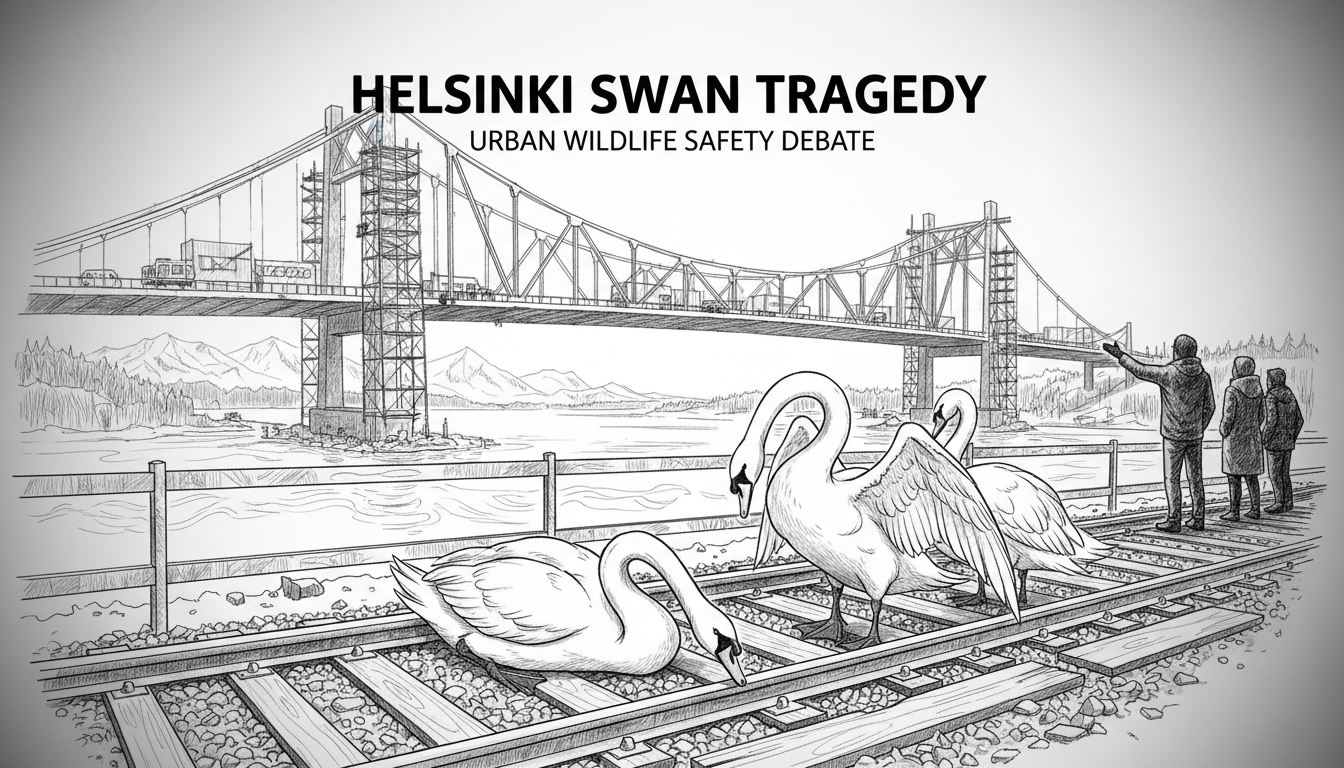A swan family tragedy at Helsinki's central railway station has exposed critical gaps in urban wildlife protection during infrastructure projects. Three swans suffered injuries with one adult bird dying after their traditional migration route between Töölönlahti and Eläintarhanlahti bays became blocked by bridge renovation work. The incident has prompted urgent calls for warning systems along railway tracks where birds now dangerously divert.
Volunteers and wildlife experts confirm all injured birds belong to the same whooper swan family that traditionally winters in the Helsinki bay area. The city's ongoing pedestrian bridge renovation project, which includes floodgate installation beneath the structure, has obstructed the underwater passage swans typically use for safe movement between feeding grounds. This forced the large birds to attempt crossing active railway lines instead.
Nina Trontti, director of animal care and conservation at Helsinki Zoo, provided details about the injured swans' conditions. The most recently injured bird sustained substantial wing damage that required immediate veterinary attention. Two other swans transported from the same railway area earlier included one adult that died during transit and a younger swan that remains under professional care. Trontti emphasized the importance of exploring practical solutions that accommodate urban wildlife needs during construction projects.
BirdLife communication director Jan Södersved identified collision with railway power lines as the likely injury cause for at least some swans. He explained that large birds like whooper swans often fail to detect thin wires sufficiently early to execute avoidance maneuvers. While warning devices used on high-voltage power lines elsewhere in Finland could potentially help, Södersved noted technical challenges in modifying active railway electrical systems.
The situation highlights broader challenges Finnish cities face balancing urban development with environmental protection obligations. Helsinki's extensive bay areas provide critical winter habitats for numerous bird species, creating recurring conflicts when infrastructure maintenance coincides with migration patterns. Similar incidents have occurred during previous construction projects near sensitive ecological zones, though this marks the first reported swan fatalities at the Töölönlahti railway crossing.
Local volunteers have repeatedly requested preventive measures along the railway corridor since the bridge closure began. Their proposals include visual deterrents and warning systems that could alert birds to danger without compromising railway operations. The current renovation project affecting the swans' passage isn't scheduled for completion until autumn 2027, raising concerns about continued wildlife risks throughout the multi-year construction period.
Wildlife officials plan to return recovered swans to their Töölönlahti home territory when their health permits. The incident has sparked discussions among city planners, transportation authorities, and conservation groups about improving coordination between infrastructure projects and wildlife protection measures. Helsinki's reputation as a green capital committed to biodiversity faces practical tests as urban density increases and climate change alters traditional animal migration patterns.
The tragic swan deaths underscore how routine municipal projects can have unintended consequences for urban ecosystems. As Finnish cities pursue sustainable development goals, this incident demonstrates the need for more integrated planning that considers wildlife movements alongside human infrastructure needs. The solution likely requires both technical interventions and better timing of construction activities to avoid critical migration periods.

